Search Results for: Of milk and money

The Forest Trends Supply Change initiative has identified more than 100 companies that plan to include smallholder farmers in their sustainability efforts, but such inclusion is easier to conceive than to achieve. Here’s how Danone, Mars, and a handful of other companies are teaming up with regional NGOs to deliver on that promise.

From 2010 through 2015, environmental NGO VI Agroforestry leveraged carbon finance to help 30,000 Kenyan farmers develop more sustainable practices. With millions of others still in poverty, however, the organization needed to scale up further, yet it was leery of taking on market risk to do so. Could a for-profit impact investment fund be the solution?

Makanda Khisa needed to recruit 60,000 farmers for the new Kenya Agricultural Carbon Project, and he knew that the early movers would set the tone for those to follow. Here’s how two of those early movers, Ignatius Sifuna Nabutola and Prisca Mayende, helped him get the project off the ground.
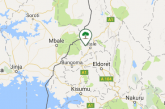
Aggressive farming devours topsoil and depletes the naturally-occurring carbon and nitrogen, while agroforestry infuses those nutrients into the ground. In 2010, the environmental NGO VI Agroforestry embarked on a groundbreaking experiment to see if it could tap carbon markets to promote sustainable agriculture.
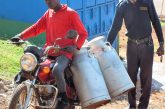
Consumer-facing companies like Danone and Mars have pledged to slash their greenhouse-gas emissions, in part by purging deforestation from their supply chains – a process that requires helping hundreds of thousands of farmers change the way they grow their crops. In this series, we’ll take a deep dive into the Kenyan milk market, and see how the revival of agroforestry is restoring soils – and may slow climate change.
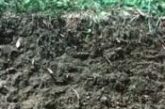
Smallholder farmers provide roughly 40% of the world’s agricultural commodities, but circumstances often force them to farm aggressively and unsustainably. In 2011, we wrote about a groundbreaking effort to change that by tapping carbon markets to help small farmers become more sustainable. Then, in 2016, we visited the program and incorporated this 2011 story into a series on Kenya’s agroforestry revolution.

Smallholder farmers provide roughly 40% of the world’s agricultural commodities, but circumstances often force them to farm aggressively and unsustainably. In 2011, we wrote about a groundbreaking effort to change that by tapping carbon markets to help small farmers become more sustainable. Then, in 2016, we visited the program and incorporated this 2011 story into a series on Kenya’s agroforestry revolution.
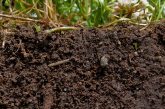
2 October 2018 | Centuries of unsustainable agriculture have squeezed massive amounts of nitrogen and carbon out of soils, and Ohio State’s Rattan Lal, a professor of soil science who has presciently spoken out about restoring forests and soils for carbon mitigation and sequestration, says we can pull about 10 percent of our greenhouse gasses […]
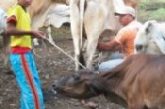
Colombia’s civil war had the perverse effect of protecting the forests in and around the Tolo River, but peace brought loggers and cattlemen, while poverty drove desperate forest people to begin chopping trees. Here’s how they used REDD to fight deforestation and build the foundation for a more sustainable future.
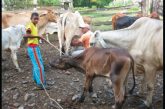
The Tolo River People of Colombia were in a bind: dependent on nearby cattle ranches to make a living, they were helping destroy the forest that sustained them and their way of life. Here’s a look at the economics that drove them to embrace carbon finance.

Australia streamlines biodiversity offsets at the state level in New South Wales, but the national Biodiversity Fund will be defunded to the tune of $231 million as a side effect of the country moving to a floating carbon price. Meanwhile, wetlands are on everyone’s mind in the Gulf of Mexico, and a new crowdfunding platform is launched.

The many initiatives launched all over the world that compensate farmers for keeping forests standing and for practicing sustainable farming are evidence that the world has responded well to payments for ecosystem services. But for these schemes to be fully merged into mainstream use, more market regulation and guidance will need to come from the government.
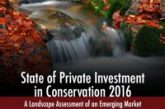
Conservation Investments aim to generate both a financial return and a verifiable environmental benefit, and impact investors funneled more than $8.2 billion into them between 2004 and 2015. They also, however, left $3.1 billion on the table. Could small farmers generate the returns they’re looking for?

This story first appeared on Clean Energy Wire 24 October 2018 | No matter how you look at it, people need sustenance to survive – and growing crops or raising livestock creates emissions. But Germany must find a way to reduce its agricultural emissions, which make up seven percent of total greenhouse gas emissions to […]

Peruvian cuisine is the ultimate fusion of the indigenous and the exogenous, and it’s sparked a demand for exotic and diverse fruits and vegetables. Here’s how the region of Caserio Pimental – Peru’s pepper district – is meeting part of that demand with agroforestry and sustainable farming.

When Elon Musk started Tesla Motors in 2003, he didn’t aim to end our car culture – just to make it cleaner. Likewise, pescatarian businessman Michael Mathres doesn’t aim to end our global love of beef and milk – but with a new product called “Mootral” he does want to reduce their impact on climate change by cleaning up cow burps.

The Donuts, Deodorant, Deforestation scorecard is letting consumers know which products are leading to peat forest destruction, and companies are taking note, with Kellogg’s, Mars, Mondolez, Nestlé, and Unilever as well as major suppliers Golden Agri-Resources and Wilmar making commitments to source deforestation-free palm oil.
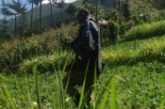
For two years now, flower growers along the shore of Kenya’s Lake Naivasha have been paying farmers in the hills 40 kilometers away to adopt sustainable agriculture practices. They’re doing it to save their lake, but it’s also helping farmers lift themselves out of poverty.

Putting Together The Pieces For Watershed Payments In Kenya
Ecosystem Marketplace will be hosting a webinar this month on the most up to date financing mechanisms for watershed conservation. Not long after, in May, the Katoomba Group will hold their 18th meeting in Beijing, China to investigate nature-based solutions to the water crisis. Meanwhile, Ecosystem Marketplace is running a story series that explores a watershed payment program in Kenya’s Lake Naivasha Watershed.

Ecosystem Marketplace will be hosting a webinar this month on the most up to date financing mechanisms for watershed conservation. Not long after, in May, the Katoomba Group will hold their 18th meeting in Beijing, China to investigate nature-based solutions to the water crisis. Meanwhile, Ecosystem Marketplace is running a story series that explores a watershed payment program in Kenya’s Lake Naivasha Watershed.

Despite the slow pace of summer, there is no shortage of happenings on the voluntary carbon front this week – with experts and stakeholders across the globe weighing in on new developments. California is again in spotlight, with the release of the public comment’s about AB 32. Read on for v-carbon highlights from around the world.
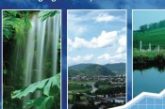
Cash-strapped governments around the world are using market mechanisms to keep water clean and prevent a threat that rivals climate change, according to a new report that documents nearly 300 programs involving nearly $10 billion in transactions. It was launched at the 17th Katoomba Meeting in Hanoi.

New York City and the Costa Rican Paradise of Heredia each embarked on pioneering efforts to harvest the power of markets to protect their water supplies. While much has been made of New York City and its solution, few have heard of Heredia – much less how it handles its water. Yet the Costa Rican example offers a case study of what payments for ecosystem services can achieve in developing nations.

Several market-based programs are in the works to promote actions designed to reduce the amount of nutrients entering the Chesapeake Bay. The Bay Journal recently took stock of various projects on the table, and their findings are reproduced in the Ecosystem Marketplace.
